This Brasserie Style Steak will give you a French bistro vibe right in your kitchen. A perfectly cooked steak topped with compound butter served with a green salad and some french fries.
With this recipe that's as French as the Eiffel Tower, you'll be transported to Paris with the first bite.
Whether you like your steak, rare, medium, or well done, we'll show you how to cook a steak perfectly and how to make the classic herb butter topping.
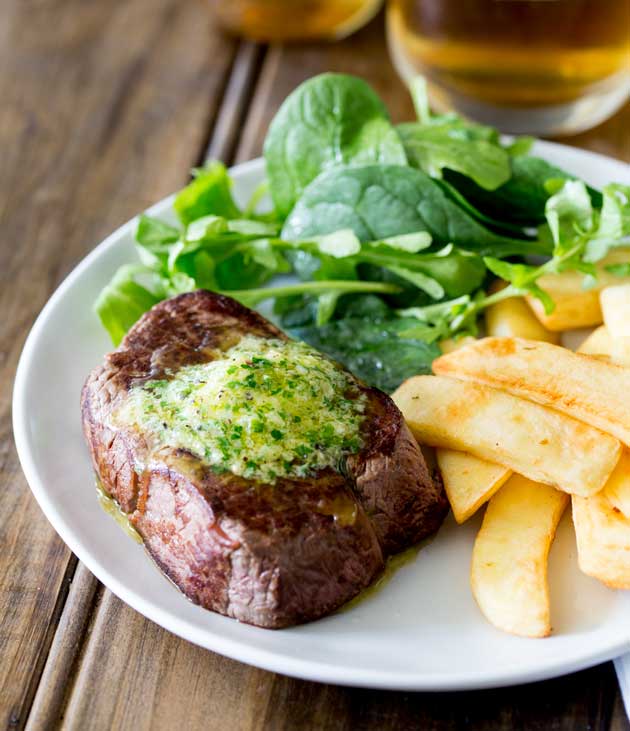
How you like steak cooked is definitely a very personal thing and everyone is convinced that their way is the best way. But that is the beauty of cooking, we get to do it our way.
Are you a solid medium-rare person? Or do you veer toward rare? Or like me, are you a through and through caveman and eat it almost raw? I am what they call a black and blue person. I love a deep crispy char (Black) and a quivering raw interior (blue).
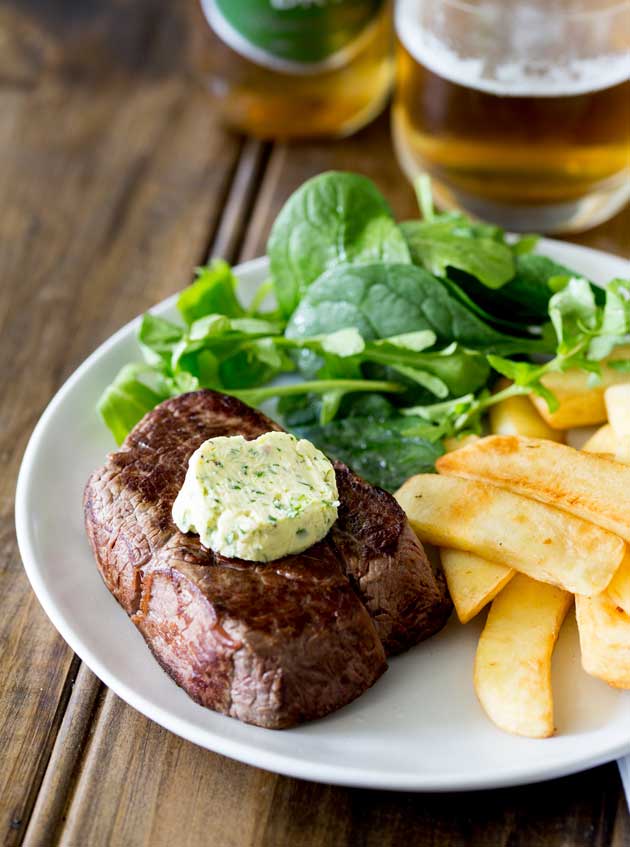
This Brasserie style steak is topped off with a pat of compound butter. Which are a great way to add extra flavor to any dish. I have a whole selection of Compound Butters on my site, so feel free to check them out.
But if we are making a French Brasserie style steak then we have to go with a French inspired butter, so these have been topped with maître d'hôtel butter. A butter containing, garlic, herbs, shallot and seasonings.
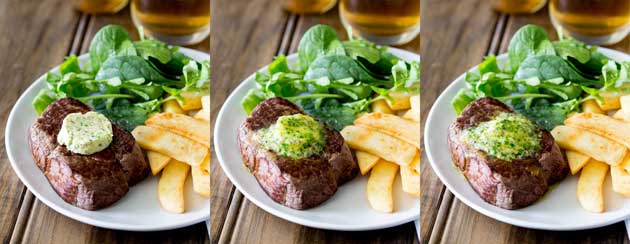
However you like it cooked and whatever your favourite cut is, there are few rules that will help you achieve steak perfection.
Temperature
Never cook a cold steak. A cold steak in a hot pan will usually stick! You want to get the steak out of the fridge at least 15 minutes before you cook it. (I tend to go for 30 minutes unless it is a super hot day.) Take the steak from the fridge, remove the packaging and pat it dry with kitchen paper. Then set it aside to come to room temp. If you have lots of insects about then an upturned colander makes the perfect vented cover.
The Pan
Now the frying pan. You want a nice heavy based frying pan. Personally I love my cast iron frying pan, but I also get great results with a heavy copper based non-stick pan. Whatever frying pan you pick, just be sure it isn't something flimsy that warps under high heat. This is not the time to use your $8 Target special. Also because you need a fierce heat, this also isn't the time to use the specially coated frying pans that say not to use over a high heat.
Once the steak is at room temp, put the frying pan over a high heat and leave it there. Just let it sit until it is searingly hot.
Dressing your Steak
Pour a small amount of oil onto each steak and rub it in well. Then just before you add the steak to the pan season it generously with salt. You salt steak just before you add it to the pan, as if you add it too soon your salt will draw out moisture, which spells disaster on two levels. One you will get a dry chewy steak and two you won't get a nice crispy sear!
So oil and salt just before you place the steak in the pan.
Cooking time
Cook over a high heat for the recommended times below. To ensure you get a nice even cook and a crispy crust I break from tradition and turn my steak every 30 seconds. A trick I learnt from Heston Blumenthal 😉
For a 3.5cm thick steak:
Blue: 3 Minutes in total (1½ minutes on each side)
Rare: 4½ Minutes in total (2¼ minutes on each side)
Medium-rare: 6½ Minutes in total (3¼ minutes on each side)
Medium: 9 Minutes in total (4½ minutes on each side)
Well Done: 11 Minutes in total (5½ minutes on each side)
For a 2cm thick steak:
Blue: 2 Minutes in total (1 minutes on each side)
Rare: 3 Minutes in total (1½ minutes on each side)
Medium rare: 4 Minutes in total (2 minutes on each side)
Medium: 6 Minutes in total (3 minutes on each side)
Well Done: 10 Minutes in total (5 minutes on each side)
Remember it is always better to err on the lesser side. A slightly undercooked steak can be seared a little longer. But an overcooked steak is something to cry over.
Leave it to rest
Once you have cooked your steak, leave it to rest. This allows any juice to redistribute and gives you a tender steak.
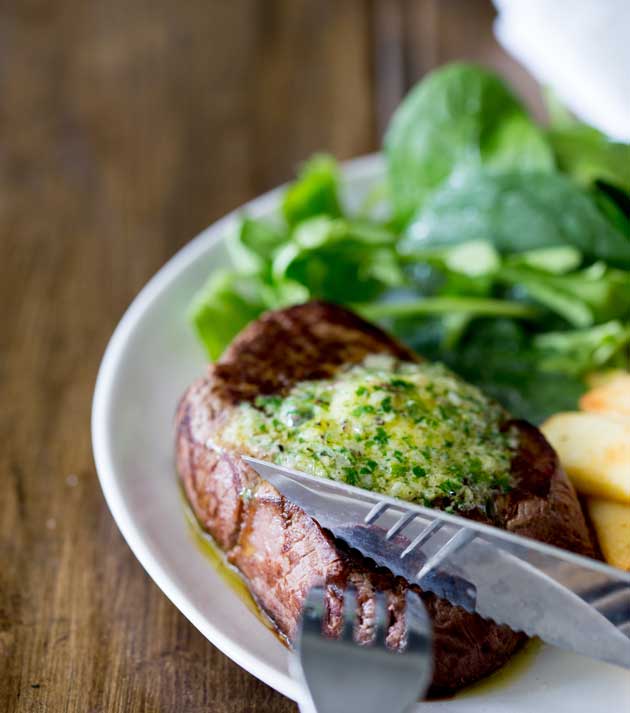
Enjoy x
Get the Recipe

Brasserie Style Steak
Ingredients
- 2 Ribeye/New York Strip/filet mignon steaks 10oz/300g each
- 1 teaspoon salt
- 1 tablespoon neutral oil
Instructions
- Take the steaks out of the refrigerator for at least 15-30 minutes before planning to cook.
- Place a skillet over high heat and leave it to get smoking hot.
- Pat the steak dry using kitchen paper. Repeat until the kitchen towel is almost sticking to the meat.
- Oil both sides of the steak.
- Just before you add the steaks to the pan, generously salt both sides of the steak.
- Cook for 2 minutes on one side, then flip and cook for 2 minutes. (or as per the notes below for your cooked preference)
- Pick up your steaks and use tongs to sear the strip of fat on the side.
- Remove from the pan and place on a plate. Cover loosely with foil and let them rest for 4 minutes.
Notes
Rare: 4½ Minutes in total (2¼ minutes on each side)
Medium-rare: 6½ Minutes in total (3¼ minutes on each side)
Medium: 9 Minutes in total (4½ minutes on each side)
Well Done: 11 Minutes in total (5½ minutes on each side) For a 2cm thick steak: Blue: 2 Minutes in total (1 minutes on each side)
Rare: 3 Minutes in total (1½ minutes on each side)
Medium rare: 4 Minutes in total (2 minutes on each side)
Medium: 6 Minutes in total (3 minutes on each side)
Well Done: 10 Minutes in total (5 minutes on each side)
Nutrition
Nutrition is per serving

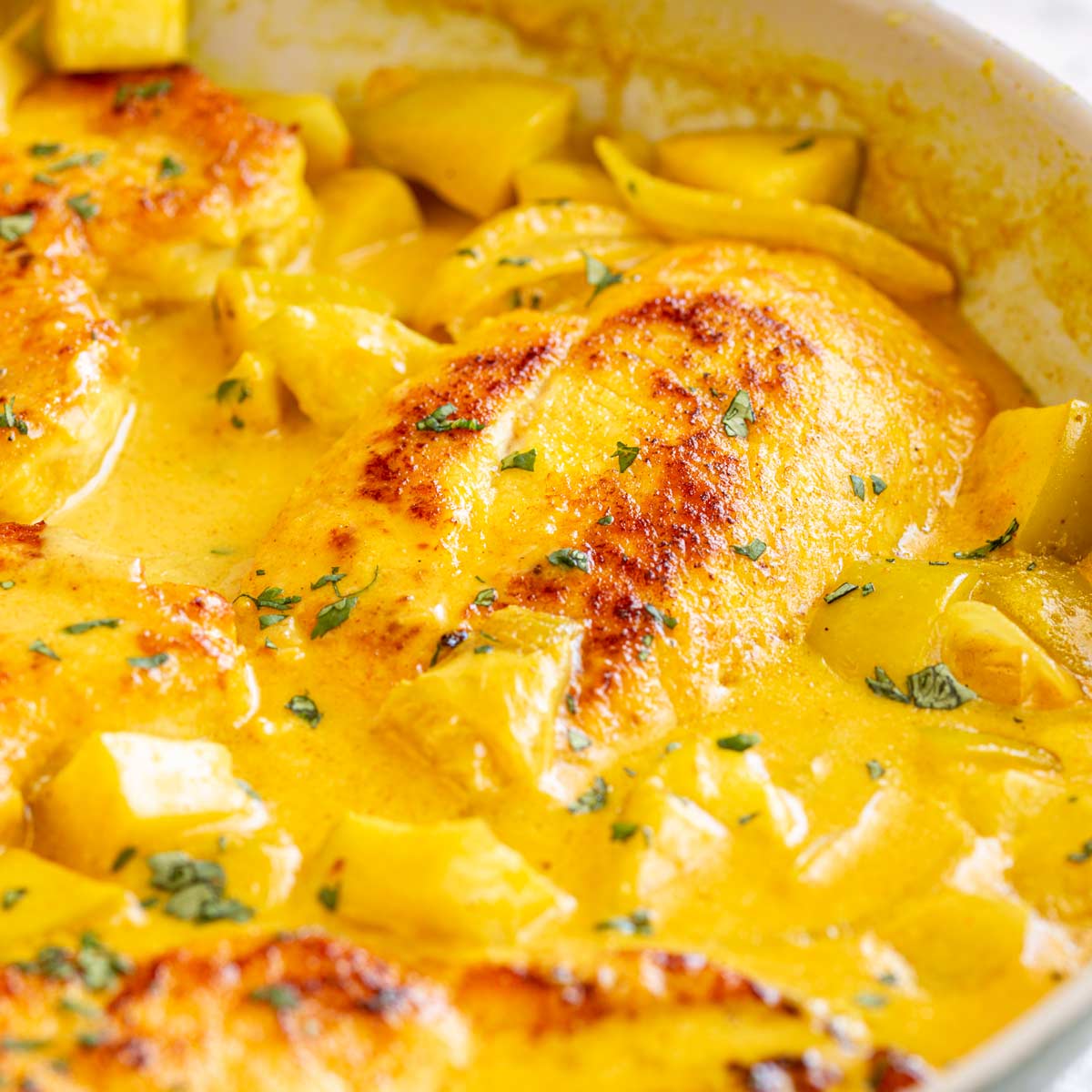
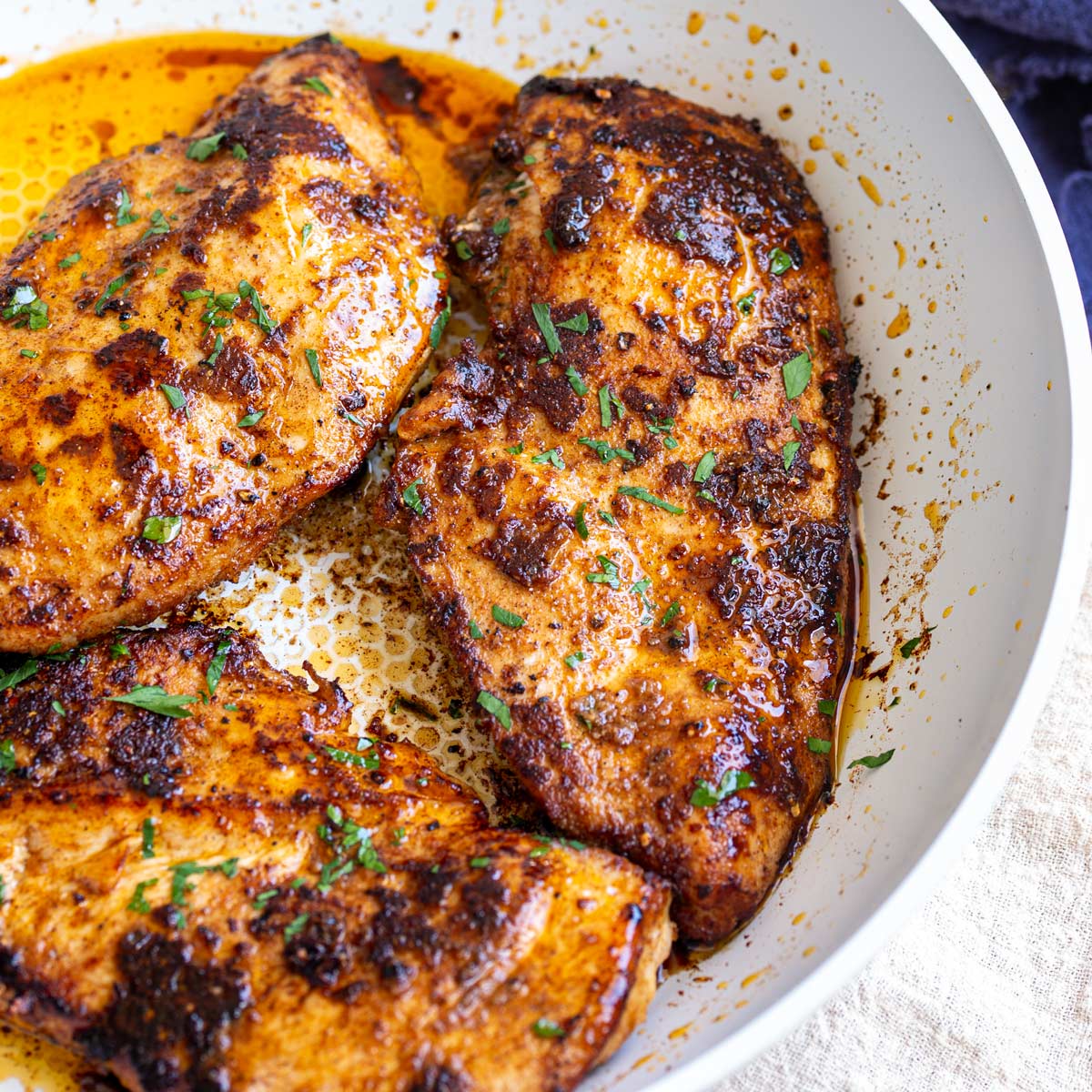
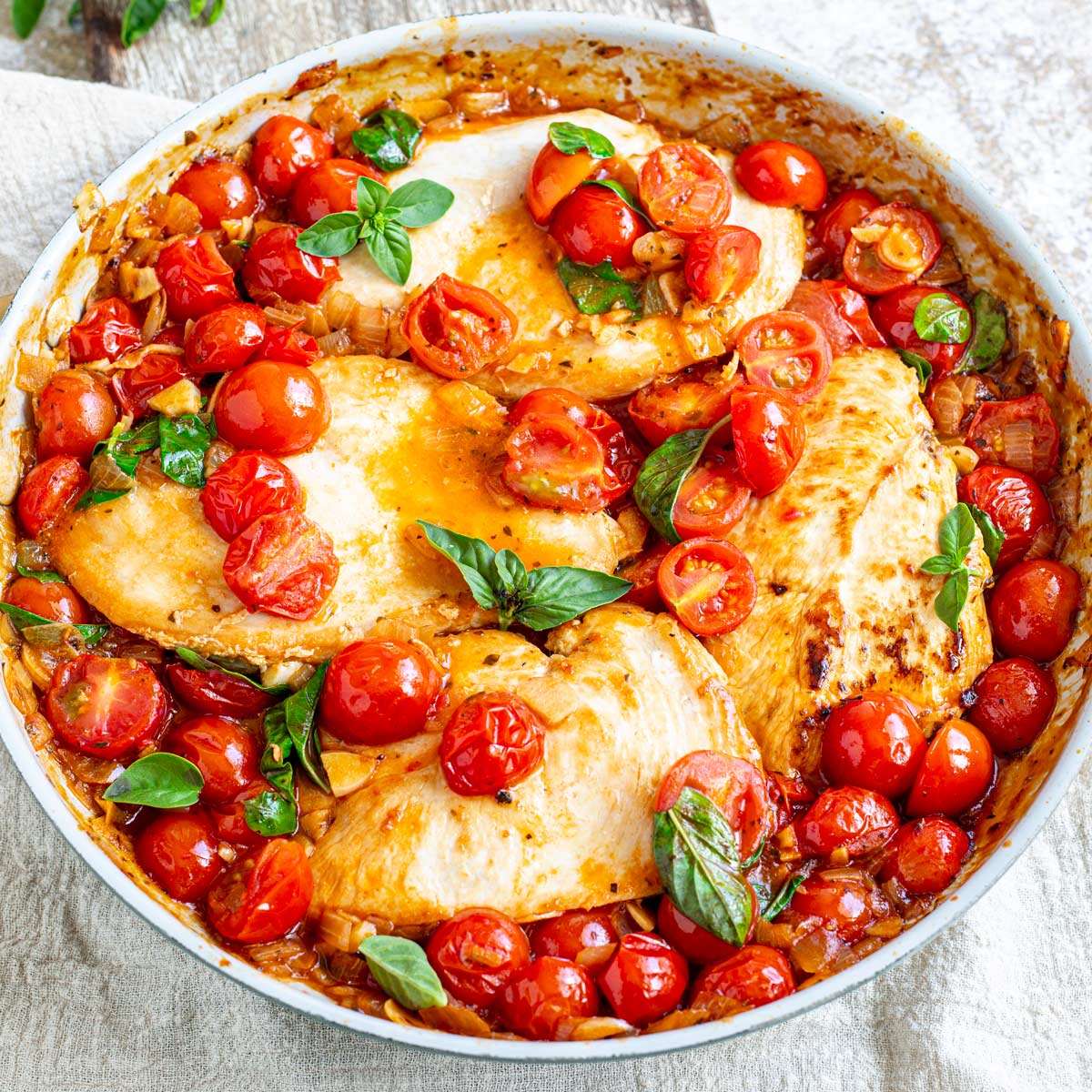
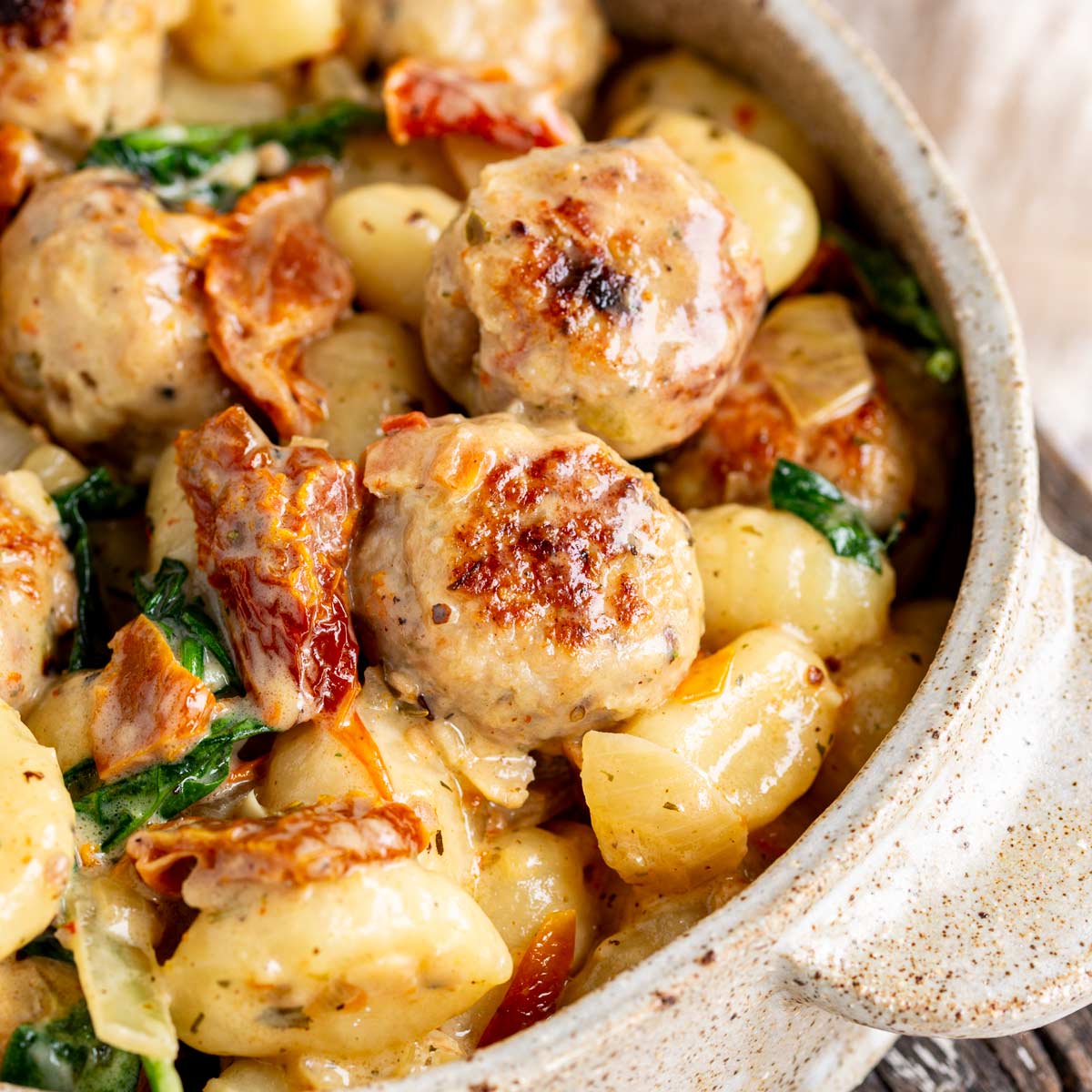
volcanos says
What a bunch of great info! Thanks
Claire McEwen says
Thank you, when you have a good steak you have to cook it right! But I guess I am talking to the converted there 😉
Allie | In This Kitchen says
This looks so, so good. Learning to cook a perfect steak (or any piece of meat or fish) is one of my main cooking goals. I NEVER know when it's done, and I hate sticking a thermometer in it... thank you for this guide, haha.
Claire McEwen says
I agree, sometimes the meat thermometer is a great tool. But when you are cooking a steak you don't want a big hole in it do you? 😉
I use this as a guide whenever I am cooking steaks for other people. I know what my black and blue steak should look like and feel like. But I don't cook medium or medium/well often enough to know by sight and touch.
x
Dorothy Dunton says
Hi Claire! I totally am with you...I am also a "black and blue" person! Or, as Gary says "rare as you dare". Anything past really rare is just a waste of good meat in my opinion! Now I want a steak and some swedes! I think that would be perfect for Monday, it's Labor Day here which is our last official holiday of summer.
Claire McEwen says
Rare as you dare!!! Yes!!!
My brothers made me eat it pretty much raw once - it was a dare - think I wrote about it in one post (just not sure which!!!)
I don't think they expected me to eat it, let alone like it! Ha Joke was on them!!!!
Have a great Labor Day. Sorry it is the end of your summer, but I am thankful that I am heading into Spring 😉 x